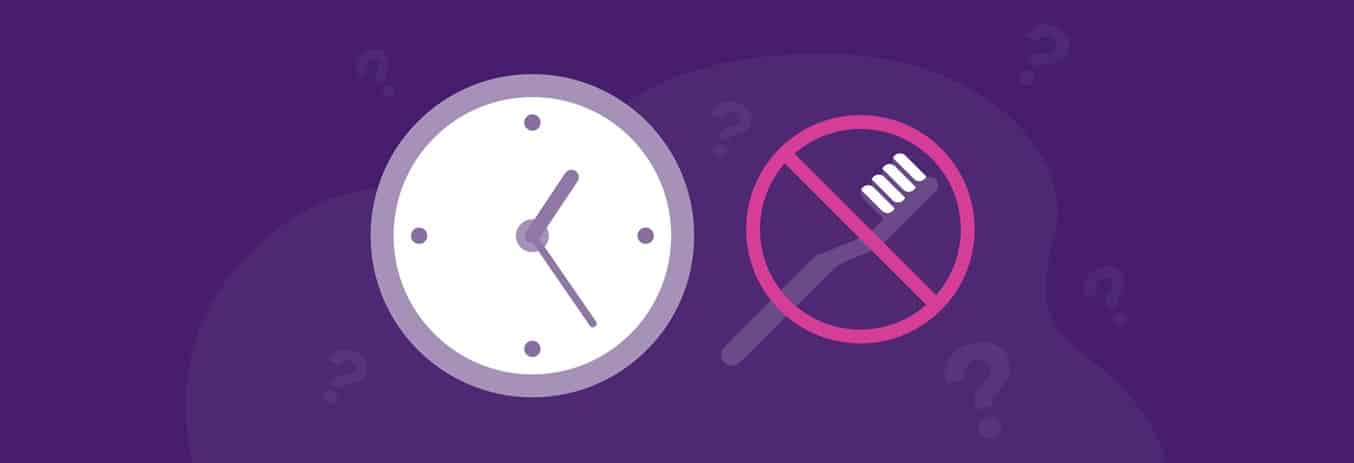What to Do If You Have a Cracked Filling

According to the CDC, approximately 91% of adults in the United States have had a dental cavity.¹ For something that affects nearly the entire population, chances are you’ve also had at least one cavity — and a filling too. But fillings, like teeth, are susceptible to cracks. Read on to find out the causes and symptoms of a cracked filling and what to do if you have one.
What Causes a Broken Filling?
There are three major causes:
- Biting Down Too Hard: Some foods — like peanut brittle — that require you to bite down too hard can crack your filling.
- Teeth Grinding: Whether you do it while you’re awake or in your sleep, teeth grinding can eventually crack your filling.
- Old Fillings: Fillings typically last about 15 years, but that varies depending on how hard you bite down, the filling material used, and the filling size (Smaller ones last longer.)
Who Is at Risk for a Cracked Filling?
Anyone who has a filling is at risk of cracking it. Of course, a hard bite and teeth grinding will increase your risk, whereas old fillings may take their time to crack and do so more naturally. Age also increases your chances of cracking your filling. That’s because the older you are, the more likely you have old fillings — and you probably have more of them too.
Prevention
Regardless of how old your filling is, you can take the following precautions to help prevent damaging it:
- Avoid Biting Down Hard: Knowing the dangers of what hard foods can do to your filling, you want to be extra careful when eating foods such as brittle, hard candies, and nuts and seeds. Also, take care when eating unpitted olives, popcorn (for those unpopped kernels), unshelled nuts, and even ice cubes. Lastly, avoid habits that put pressure on your teeth/fillings, such as biting down on pencils or your fingernails.
- Wear a Mouthguard: If you grind your teeth, a mouthguard prevents expedited wear and tear of both your teeth and fillings. Side note: Teeth grinding can be a symptom of sleep apnea, a serious disorder that is diagnosed with a sleep study.
- See Your Dentist: A regular visit to your dentist for a cleaning and checkup can help keep you fillings in good shape. If your filling shows noticeable deterioration, we can refill it before it cracks. At the very least, we’ll see if it has already cracked and replace it quickly, reducing your time spent with a damaged filling.
What Are the Symptoms?
Observing a hole or dark spot on your filling could be a sign that it’s cracked, but it’s not always detectable with the naked eye. Some other cracked filling symptoms are:
- Sensitivity when biting down/chewing
- Sensitivity to hot/cold foods and beverages
- General tooth pain/ache
- Food particles that get stuck next to/around the filling
- Feeling a hole or other irregularity when running your tongue over your tooth
What Happens If I Ignore a Cracked Tooth Filling?
You may be tempted to ignore a broken tooth filling, but you shouldn’t. Remember, your filling was put there to protect your tooth after your tooth decay was removed. When your filling cracks, a space forms between the worn filling and your tooth that can trap bacteria. This bacteria is difficult to brush or rinse away and could create problems such as eventual tooth decay.
What Is the Treatment?
The two most common options to treat a broken filling are:
- Replacing the Filling: This is the simplest treatment but be aware that a replacement filling needs to be bigger than the previous one. That’s because each time you drill out an old filling for a new one, you take a little bit more of the tooth with it. It’s also important to mention that a filling can only be so big, so replacing one isn’t necessarily an infinite option.
- A Dental Crown: If your current filling is already the maximum size it can be, you may need to get a dental crown instead. A dental crown is a cap that fits over your damaged tooth.
What Should I Do If I Have a Cracked Filling?
Don’t panic, but come see us right away. A cracked filling is an urgent matter even if you don’t experience any pain. Dr. Hedrick will examine your tooth, possibly take x-rays, and recommend the best course of action to fix it. Give us a call at 303-772-6333, and the entire team at Longmont Dental Loft will take excellent care of you!
References
-
- Dye, B., Thornton-Evans, G., Li, X., Iafolla, T. Dental Caries and Tooth Loss in Adults in the United States, 2011–2012. cdc.gov. Retrieved November 8, 2023, from https://www.cdc.gov/nchs/products/databriefs/db197.htm#:~:text=edentulism%2C%20disparities%2C%20NHANES-,What%20percentage%20of%20adults%20had%20dental%20caries%20in%20permanent%20teeth,20%E2%80%9334%20(82%25).


